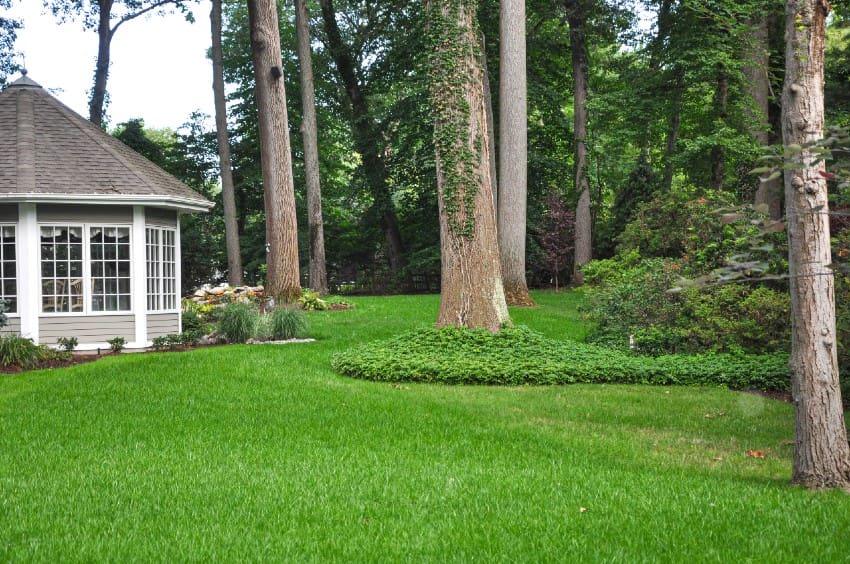If your trees and shrubs are in distress — showing yellowing leaves or little growth — it might be time to consider deep root feeding.
A gorgeous lawn includes the entire ecosystem of your property. Your trees and shrubs should stand tall and sturdy, just as lush as the grass beneath them. Compacted and clay-rich soils can make it difficult for deep roots to get the water and nutrients they need to remain healthy. Borst’s organic deep root feeding method delivers nourishment straight to the root ball where it’s needed most.
To ensure the health of your trees and shrubs, contact Borst Landscape & Design today. Click here for our online contact form, or give us a call at (201) 581-8076.
What Are the Benefits of Deep Root Feeding?
Here are the basics: Trees and shrubs need fertilization just as your grass does. Deep root feeding is a fertilization process that uses a large spike to funnel nutrients 8-12” underground at the base of your tree or shrub.
When soil is compacted or if the surrounding grass thatch is too thick, water and nutrients can have a tough time getting down to a tree’s roots. In addition to fertilizing, deep root feeding also helps to aerate dense soil so roots can get the oxygen necessary to absorb nutrients.
In forests, trees self-fertilize when their autumn leaves decay. In neighborhoods, where leaves are blown away to preserve lawns, we need to take other measures.
How Do I Know if My Tree Needs Fertilization?
Newly planted trees or trees damaged in a storm are prime candidates for deep root feeding. After an environmental shock, an extra blast of nutrients can help speed up recovery.
Mature trees have their own language for expressing a need for enrichment. Leaves act as an excellent diagnostic tool. Look out for these simple signs:
- Very little growth despite rainfall.
- Smaller leaves with each passing year.
- Leaves tinged with yellow, instead of a healthy green.
- Leaves changing color and falling as early as late August/early September.
Even a healthy tree can benefit from deep root feeding. Just like taking a multivitamin to improve immunity, our organic fertilization method helps trees become resistant to fungal infections and overcome mineral deficiencies.
Not only that, our process helps trees “root to rise” so to speak — the deeper the roots, the more support exists for the canopy to grow. Studies have shown that this fertilization process can increase trees’ growth rate by 20% thanks to strengthened roots.
Another perk of deep roots is resilience in the face of drought. When a tree can tap into groundwater deep in the earth, it has a more secure water source — one which is less dependent on consistent rain.
How Can I Tell It’s Working?
To see results, we recommend deep root feeding twice a year between fall and mid-spring. While trees and shrubs “overwinter,” fertilization works to improve their immune systems. Fertilizing in spring encourages tip and leaf growth.
At Borst We Take the “Green” Approach
We consider every angle when we care for your property, and that includes our impact on the environment. Fertilizing trees underground reduces erosion, evaporation and fertilizer runoff. Besides, deep root feeding targets the tree rather than surface weeds.
Call on Borst Landscape & Design to give your yard the care it needs. Reach out with our online contact form, or give us a call at (201) 581-8076.

